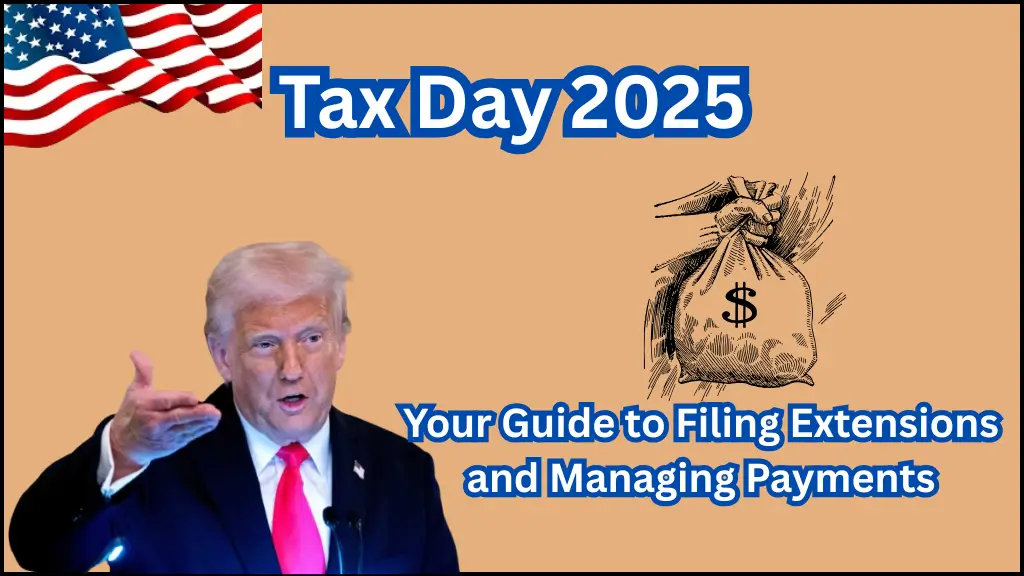Tax Day 2025: Your Guide to Filing Extensions and Managing Payments
With Tax Day 2025 right around the corner, taxpayers who aren’t ready to file by the April 15 deadline need not worry. The Internal Revenue Service (IRS) offers multiple avenues to request an extension and set up manageable payment plans. Whether you’re taking advantage of the IRS Free File program or exploring payment arrangements, now is the time to take action and secure your filing extension.

Filing an Extension: How It Works
If you cannot complete your federal income tax return by the April 15 deadline, you can request an automatic extension by submitting Form 4868 – the Application for Automatic Extension of Time to File U.S. Individual Income Tax Return. This electronic process, available through the IRS Free File system, simplifies your application and ensures you have extra time to gather and review your tax documents.
- Easy Online Filing: The IRS offers an automatic filing method that reduces the risk of errors by guiding you through each section of the form.
- Immediate Acknowledgment: Submit your extension online, and receive instant confirmation if your application meets the criteria.
Streamlined Electronic Payment Options
While an extension grants you extra time to submit your return, any tax liability must be addressed. The IRS provides several electronic payment options designed for convenience and security:
- Direct Payment: Transfer funds directly from your bank account.
- Debit, Credit, or Digital Wallet: These options allow you to schedule a payment that fits your budget.
- Early Refund Deposits: Taxpayers can request direct deposit of any refunds, sometimes arriving as quickly as 21 days after filing.
By using these services, you can minimize processing errors and ensure that your payment is received on time, even if you’re granted an extension for filing.
Flexible Payment Plans for Outstanding Balances
For those who can’t pay their taxes in full by the deadline, the IRS offers accessible payment plans:
- Short-Term Payment Plans: Designed for balances under $100,000, this plan offers up to 180 days to settle your debt while interest and penalties are reduced.
- Long-Term Payment Plans: Now streamlined for eligibility, these plans cover individuals with balances under $50,000, allowing monthly payments over a term of up to 10 years.
Even if interest and penalties continue to accrue, taxpayers benefit from reduced penalties while the payment plan is active, easing the financial burden until the full amount is paid.
Tips for a Smooth Tax Season
- Act Early: Don’t wait until the last minute. Filing for an extension and setting up your payment plan is a proactive way to avoid complications.
- Double-Check Your Data: Use the IRS Free File system’s built-in error checks to ensure your information is correct.
- Seek Professional Advice: If you’re unsure about any aspect of your tax filing or payment plan, contacting a tax professional can provide clarity and peace of mind.
Stay informed and use the available tools provided by the IRS to keep your tax responsibilities manageable and stress-free this year.
FAQs
Q: What is Form 4868?
A: Form 4868 is the IRS document you file to request an automatic extension for submitting your federal income tax return.
Q: Can I pay my taxes after receiving an extension?
A: Yes, while the extension allows additional time to file your return, your tax liability is still due. Electronic payment options are available.
Q: What payment plan options does the IRS offer?
A: The IRS provides short-term and long-term payment plans based on your tax balance, allowing you to manage outstanding amounts more comfortably.
Q: How soon can I receive my refund?
A: Taxpayers can receive their refund in as little as 21 days if they opt for direct deposit.
Q: Who is eligible for the IRS Free File program?
A: Taxpayers with an adjusted gross income of $84,000 or less for the tax year 2024 can use the IRS Free File program.
As a finance news writer at sirfal.com, I specialize in breaking down complex economic trends, market updates, and investment strategies into clear, actionable insights. My mission is to empower readers with the knowledge needed to make informed financial decisions. Thank you for engaging with my articles; I hope they add value to your financial journey.